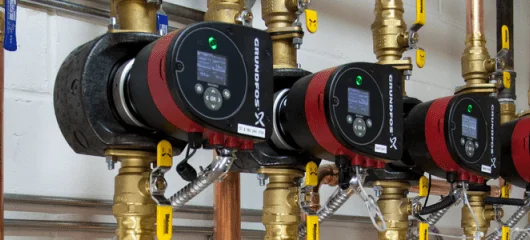Continuing with Southern PHC's Legionella bacteria thermal disinfection series, we are ready for the last line of defense. In the past issues we have discussed point-of-distribution mixing valves and thermal balancing valves. These devices are great at maintaining proper DHW temperatures throughout the system. However, they are not scald protection devices. A point-of-use mixing valve is key to allow for thermal disinfection of the recirculation lines, without the risk of scalding at a fixture, even when the system is in disinfection mode.
Scald Prevention
Taking a step back, the goal in any thermal disinfection process is to heat water to the point that it will begin to kill the Legionella bacteria present in the recirculation lines. However, if you are circulating 160 water throughout a building, and someone turns on a faucet, they could be scalded by hot water in less than a second. Point-of-distribution mixing valves and balancing valves alone do not protect from scalding. To protect occupants from water that is dangerously hot at the fixtures, ASSE 1070 approved point-of-use mixing valves are needed.
The most critical locations for ASSE 1070 approved valves are hot water fixtures where an occupant may not be able to quickly get out of the way of a stream of scalding water. Schools, hospitals and nursing homes should always have point-of-use protection. However, there is no guarantee that a child wouldn’t try to wash their hands in any sink at any time. Having point of use mixing valves on any hot water fixture protects occupants from the risk of scalding.
Read the entire article...






